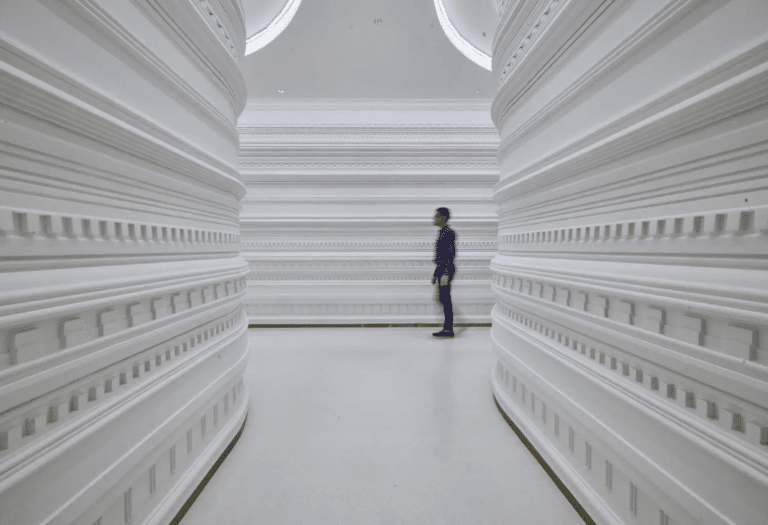From Displacement to Dignity: Rethinking the Architecture of Shelter as Essential Homes
The jury and the public have had their say — feast your eyes on the winners of Architizer’s 12th Annual A+Awards. Subscribe to our Awards Newsletter to receive future program updates.
What are your property priorities? Which non-negotiables guide you when designing homes? What do we actually need in a house?
For 1.6 billion people worldwide, the answer is startlingly simple — better shelter than the inadequate accommodation they currently have. Not least the 103 million globally displaced through war, famine, natural disasters and economic crises living in makeshift homes, from run-down British hotels to frontline refugee camps. A figure that’s growing by the day as humanitarian flashpoints from Afghanistan to South Sudan, Palestine to Ukraine, Venezuela to Rakhine continue to force innocent civilians to abandon all they know and move in the hope of finding safety.
Architects have long been trying to develop alternatives to the temporary accommodation solutions that define refugee camps. Many of these settlements surpass their limited intended shelf life, with the United Nations High Commissioner for Refugees [UNHCR] reporting on generations being born into hastily erected villages, which quickly swell into towns. Countless adults have now spent decades without a permanent place to call their own. Kutupalong, Bangladesh, currently the world’s largest refugee camp, is now home to over 785,000 people.
The Jury Winner in Architecture + Innovation at the 2024 Architizer A+ Awards, the Norman Foster Foundation and Holcim‘s Essential Homes research project is the latest blueprint hoping to change conditions for the better. Presented for the first time at least year’s Venice Architecture Biennale as a full-scale prototype, each 580 square feet (54-square meter) home costs €20,000 to complete, can be adapted to suit a variety of situations, and is created from lightweight, low-cost materials that are easy to produce and transport, and are easy on the environment.
Low-carbon, rollable concrete sheets serve as the external shell, providing robust protection from the elements outside. Modular in design, the concept can be adapted and expanded in response to a multitude of changing needs, with foundations made from recycled construction aggregate materials. A combination of used and decommissioned bits from other projects, putting circularity front-and-centre — a major win given waste from camps is an ecological disaster in itself.
The social and humanitarian impact of the Essential Homes research project is undoubtedly impressive, as are the eco top lines. Each structure will produce 5.9 tonnes of CO2 emissions, a significant reduction — no less than 70% — on the 19.9 tonnes created from an average brick-and-mortar home. Insulation adds to the efficiency rating, with boards and low-carbon aerated concrete foam helping bring down noise pollution and manage interior climate, particularly thermal retention.
But ultimately, where Essential Homes really shine is in their less tangible properties. The zeitgeist of what makes a house a home, and a shelter something more personal. These rightly award-winning designs call to mind numerous iterations of the tiny home, many of which were not conceived to answer demand for emergency refuge following devastating events.
When erected en masse, Essential Homes masterplans begin to look like more familiar suburban residential neighborhoods, permeable pathways connecting each individual residence. Their light-absorbing properties emitting natural luminosity at night, another aspect bringing energy consumption down while contributing towards camp safety after dark — sadly a major issue in many of these self-contained diaspora societies.

Prototype of Essential Homes in a suburban setting with external greening and permeable pathways by Norman Foster Foundation and Holcim
The concept has already evolved from a single occupancy iteration to row house version, proving it could be appropriated for both urgent response needs and the more malignant slow creep of low cost housing shortages evident everywhere from Europe to the Far East, US to sub-Saharan Africa. And it won’t be long until we begin to see what the impact looks like at scale.
Less than two years after its debut in Venice, and following this summer’s working prototype at the Royal Academy of Arts Summer Exhibition in London, Essential Homes are now about to be used in practice. A roll out is planned for South America in 2025, bringing with it an opportunity to turn the dream of a more sustainable, durable and — crucially — dignified place to live for hundreds of thousands of the world’s most vulnerable people into a reality. Perhaps not a cause for celebration — we are still failing to address the root causes catalysing this design — nevertheless this is a shining example of architecture focused on the good of humanity.
The jury and the public have had their say — feast your eyes on the winners of Architizer’s 12th Annual A+Awards. Subscribe to our Awards Newsletter to receive future program updates.

